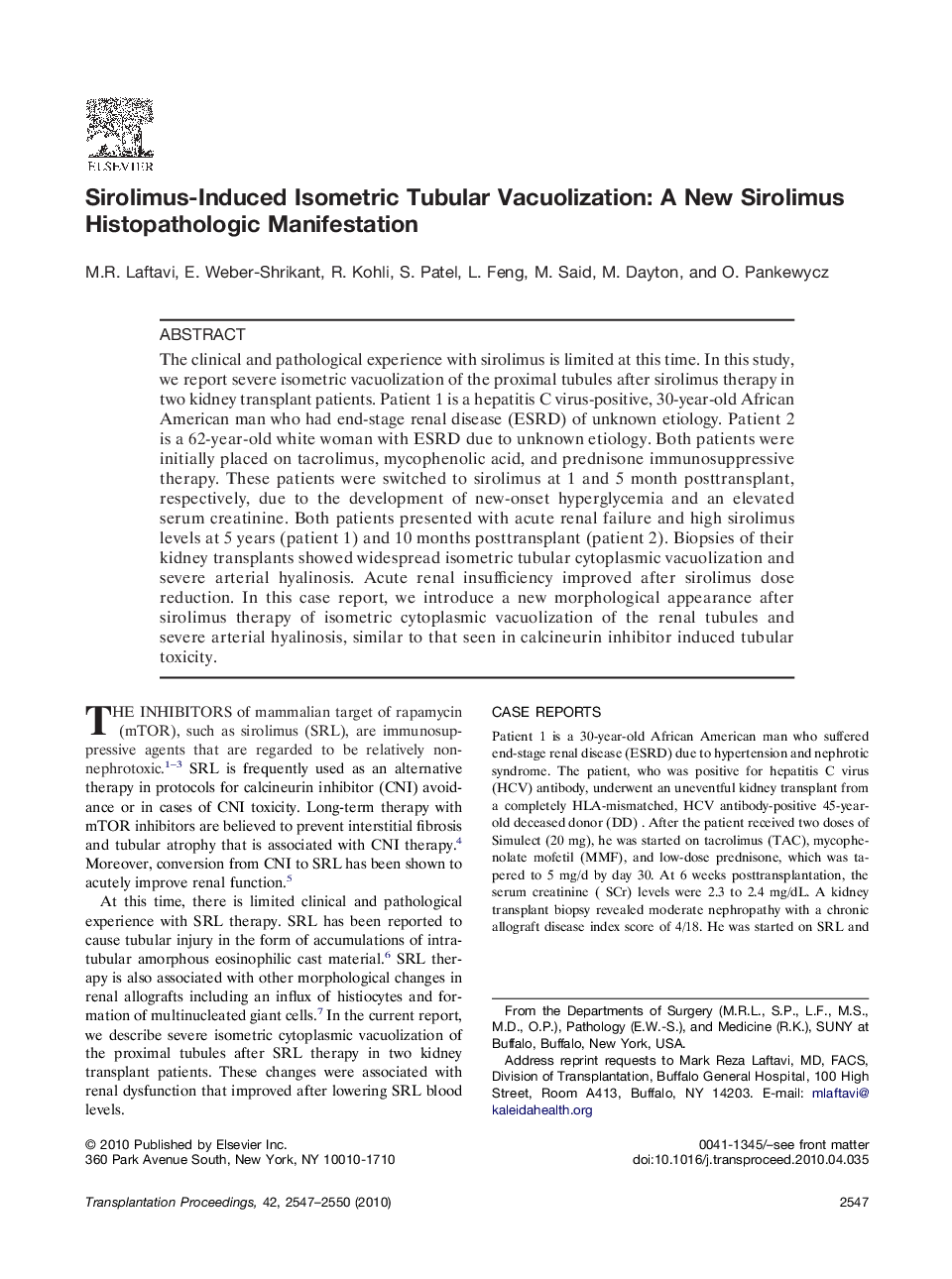| Article ID | Journal | Published Year | Pages | File Type |
|---|---|---|---|---|
| 4259434 | Transplantation Proceedings | 2010 | 4 Pages |
The clinical and pathological experience with sirolimus is limited at this time. In this study, we report severe isometric vacuolization of the proximal tubules after sirolimus therapy in two kidney transplant patients. Patient 1 is a hepatitis C virus-positive, 30-year-old African American man who had end-stage renal disease (ESRD) of unknown etiology. Patient 2 is a 62-year-old white woman with ESRD due to unknown etiology. Both patients were initially placed on tacrolimus, mycophenolic acid, and prednisone immunosuppressive therapy. These patients were switched to sirolimus at 1 and 5 month posttransplant, respectively, due to the development of new-onset hyperglycemia and an elevated serum creatinine. Both patients presented with acute renal failure and high sirolimus levels at 5 years (patient 1) and 10 months posttransplant (patient 2). Biopsies of their kidney transplants showed widespread isometric tubular cytoplasmic vacuolization and severe arterial hyalinosis. Acute renal insufficiency improved after sirolimus dose reduction. In this case report, we introduce a new morphological appearance after sirolimus therapy of isometric cytoplasmic vacuolization of the renal tubules and severe arterial hyalinosis, similar to that seen in calcineurin inhibitor induced tubular toxicity.
